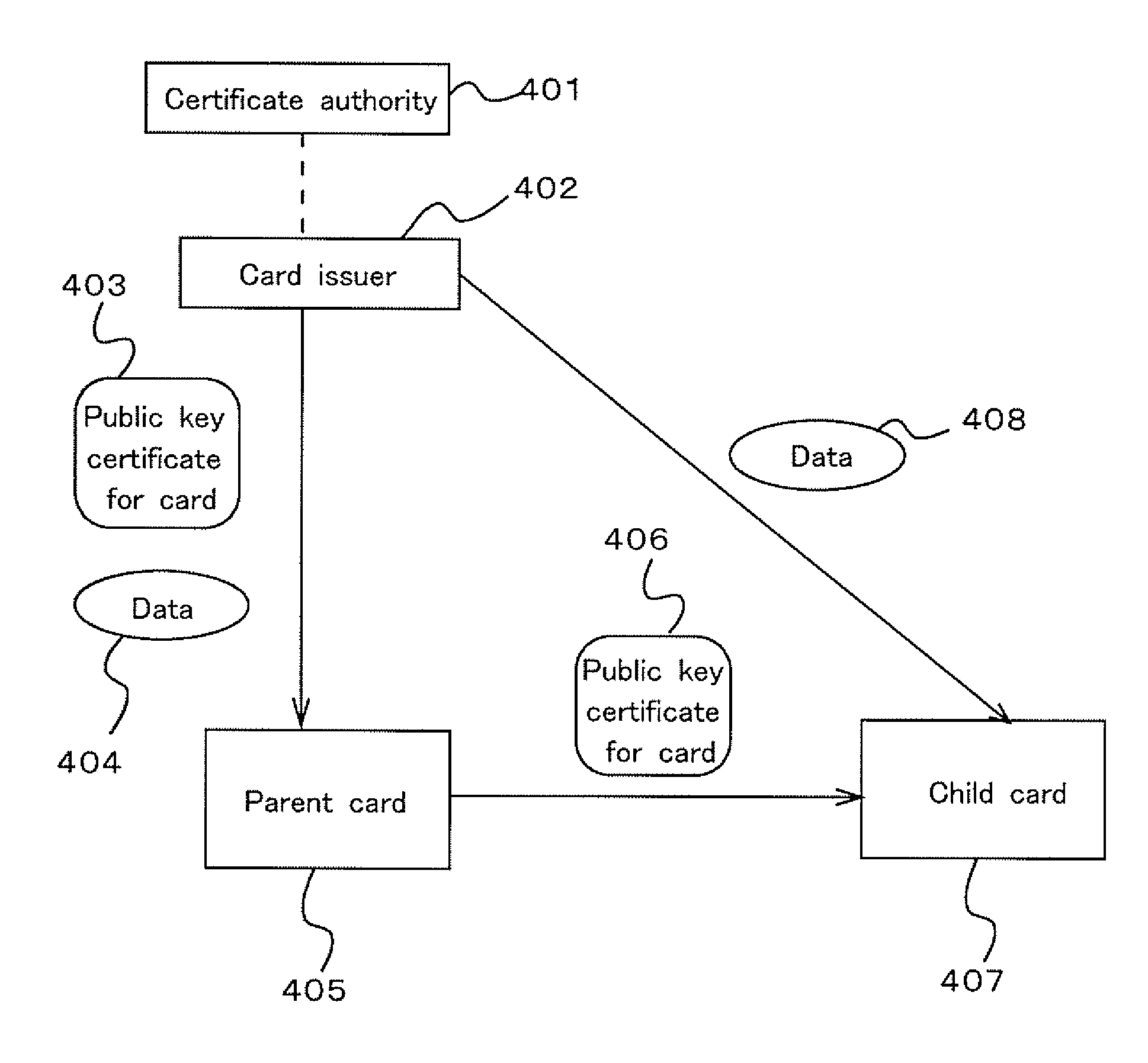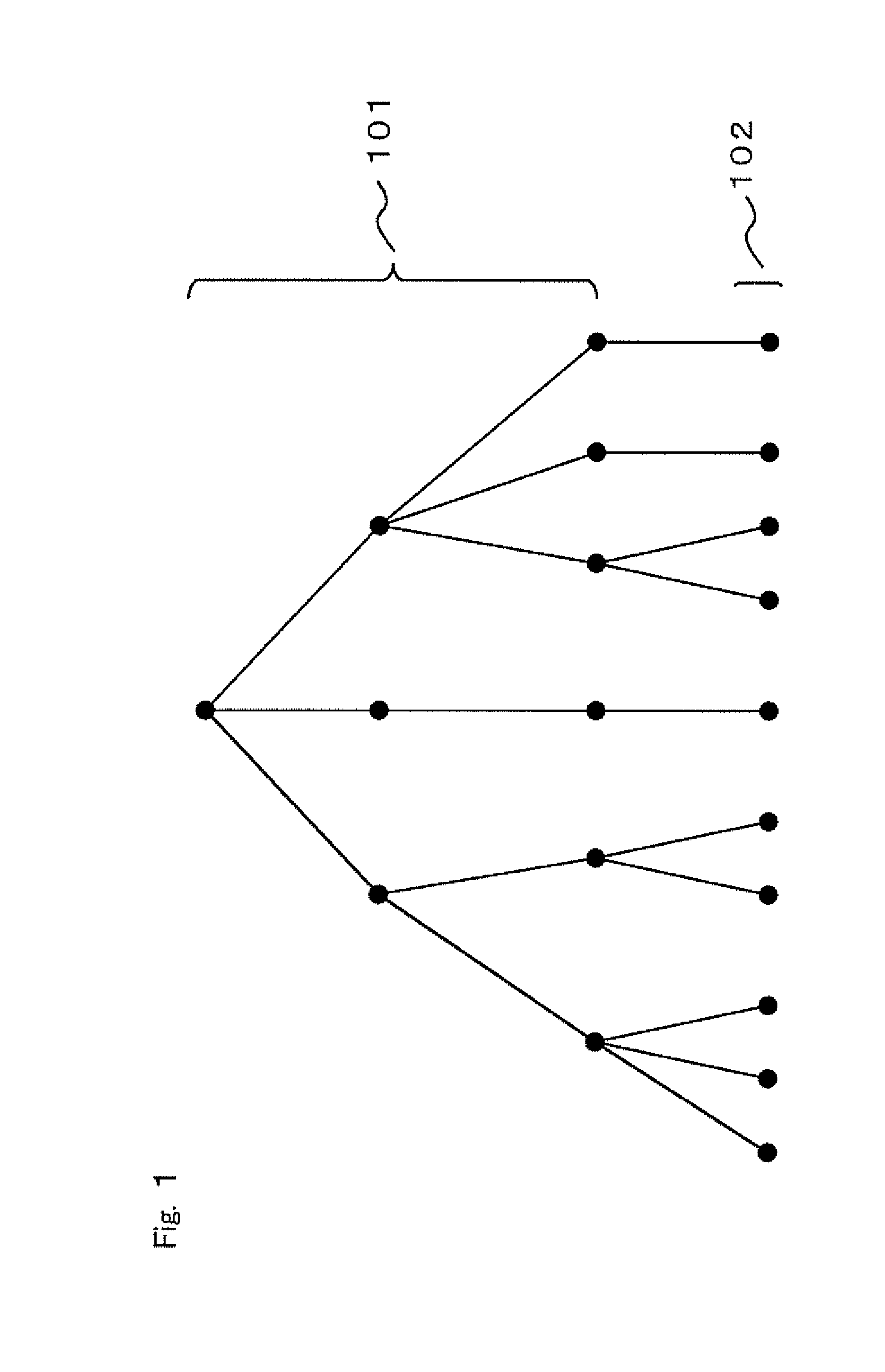Parent-Child Card Authentication System
a technology of authentication system and card, applied in the field of authentication, can solve the problems of cumbersome process, difficult management of the life cycle of the ic card, and cumbersome processing, and achieve the effect of efficient use of the memory area of the card and easy grant of authority
- Summary
- Abstract
- Description
- Claims
- Application Information
AI Technical Summary
Benefits of technology
Problems solved by technology
Method used
Image
Examples
first embodiment
[0074] As the first embodiment, the parent-child card authentication system, in which a first-generation card as an ancestor card authenticated by a root certificate authority, and a descendent card successively inheriting the authentication is generated, will be described.
[0075]FIG. 6 is a schematic diagram of the parent-child card authentication system of the first embodiment. In the upper portion of FIG. 6, the tier of certificate authority is indicated. In the relation of these certificate authorities, the certificate authority in the upper tier authenticates the certificate authority directly below. The root certificate authority may be the certificate authority locating at the root in FIG. 6, or may be the certificate authority directly above the first-generation card. In cases where the root certificate authority is located at the root portion in FIG. 6, the ‘first-generation card authenticated by the root certificate authority’ corresponds to the first-generation card direc...
second embodiment
[0095] As the second embodiment, the parent-child card authentication system, wherein the existence-proof information for N+1th-generation card includes self-identification information for uniquely identifying the N+1th-generation card, will be described.
[0096] The second embodiment is a parent-child card authentication system according to the first embodiment, wherein the existence-proof information for N+1th-generation card includes self-identification information for uniquely identifying the N+1th-generation card. The terms ‘uniquely identifying’ means that the N+1th-generation card is uniquely specified.
[0097] In an example of the configuration, in which the self-identification information is included, the value stored as a subject in FIG. 8 may be the value acquired by a combination of the name or identifier of the manufacturer of N+1th-generation card, and the production number of the manufacturer. Alternatively, instead of such a value, the name of the N+1th-generation card...
third embodiment
[0099] As the third embodiment, the parent-child card authentication system, wherein the existence-proof information for N+1th-generation card includes identification information for uniquely identifying the Nth-generation card, will be described.
[0100] The third embodiment is a parent-child card authentication system according to the first or second embodiment, wherein the existence-proof information for N+1th-generation card includes parent-identification information for uniquely identifying the Nth-generation card. The terms ‘uniquely identifying’ means that the Nth-generation card is uniquely specified.
[0101] In an example of the configuration, in which the parent-identification information is included, the value stored as the issuer in FIG. 8 may be the value acquired by a combination of the name or identifier of the manufacturer of Nth-generation card, and the production number of the manufacturer. Alternatively, instead of such a value, the name of the Nth-generation card h...
PUM
 Login to View More
Login to View More Abstract
Description
Claims
Application Information
 Login to View More
Login to View More - R&D
- Intellectual Property
- Life Sciences
- Materials
- Tech Scout
- Unparalleled Data Quality
- Higher Quality Content
- 60% Fewer Hallucinations
Browse by: Latest US Patents, China's latest patents, Technical Efficacy Thesaurus, Application Domain, Technology Topic, Popular Technical Reports.
© 2025 PatSnap. All rights reserved.Legal|Privacy policy|Modern Slavery Act Transparency Statement|Sitemap|About US| Contact US: help@patsnap.com



